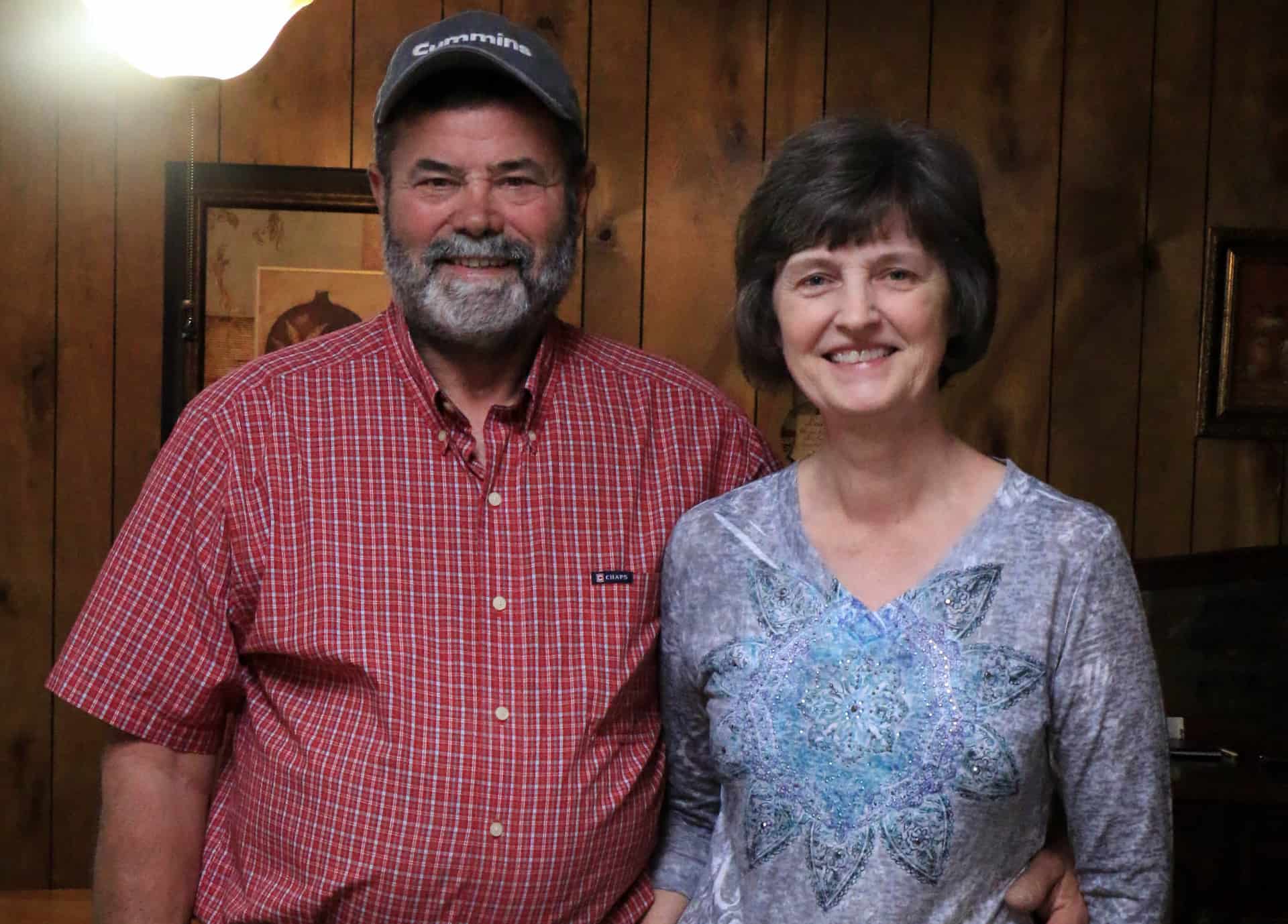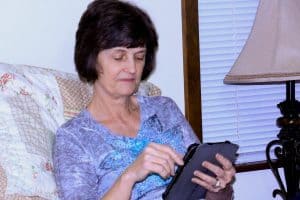View Larger Image

Jamie Whitaker, of Hensley, with her husband, Pete.
Corneal Transplant Lets Hensley Woman Read Again
| Nov. 24, 2015 | Jamie Whitaker, of Hensley, knew her eyesight was diminishing.
As someone who loved to read, Whitaker could tell she was having more difficulty making out the words. It reached the point where she had trouble reading road signs and distinguishing whether an oncoming vehicle was a truck or car.
Still, she didn’t realize just how serious her failing eyesight had become until, she failed the vision test while renewing her license.
“There was a cloud over my eyes and I couldn’t see well,” said Whitaker. “It grows slowly and you don’t realize how bad it is. It’s hard to explain, but in your mind, you still think you can see better than you can.”
“She tried bigger, stronger glasses, but she would get tired because she couldn’t read,” her husband, Pete, said. “She couldn’t see, really.”
Whitaker did not know at the time her deteriorating vision was the result of Fuchs’ dystrophy and it would take donated corneas from the Arkansas Lions Eye Bank & Laboratory at UAMS to restore her sight.
The disease causes cornea swelling and cloudy vision. Like with Whitaker, Fuchs’ dystrophy usually occurs in both eyes and causes a person’s vision to worsen over many years.
After failing her vision test, she was referred to the UAMS Harvey & Bernice Jones Eye Institute and David Warner, M.D., an ophthalmologist, assistant professor and director of the cornea service in the Department of Ophthalmology in the UAMS College of Medicine.
“The inside layer of the cornea wears out at a certain rate with everyone, but with Fuchs’ dystrophy, the rate is faster,” said Warner. “In patients with the disease, during their 40s or 50s, they’ll most likely notice deteriorating vision. It’s a slowly progressive disease.”
Patients with the disease typically require a cornea transplant to correct the vision problems, Warner said.
Whitaker had a cornea transplant in one eye five years ago and the second transplant a couple of years later. She received both corneas from a donor to the Arkansas Lions Eye Bank & Laboratory at UAMS, where Warner serves as the medical director.
The Arkansas Lions Eye Bank & Laboratory was established in 1986 and has grown to be one of the premier eye banks in the country.
Whitaker said she was thankful for her donor and the eye bank, which made her transplants possible. Now, her vision is back to normal. She’s able to drive again and her husband says she is reading just as much as she used to before her vision diminished.
“I buy her about four books every month for her to read on her Kindle, and she always has them read, wanting more before the end of the month,” said Pete Whitaker.
